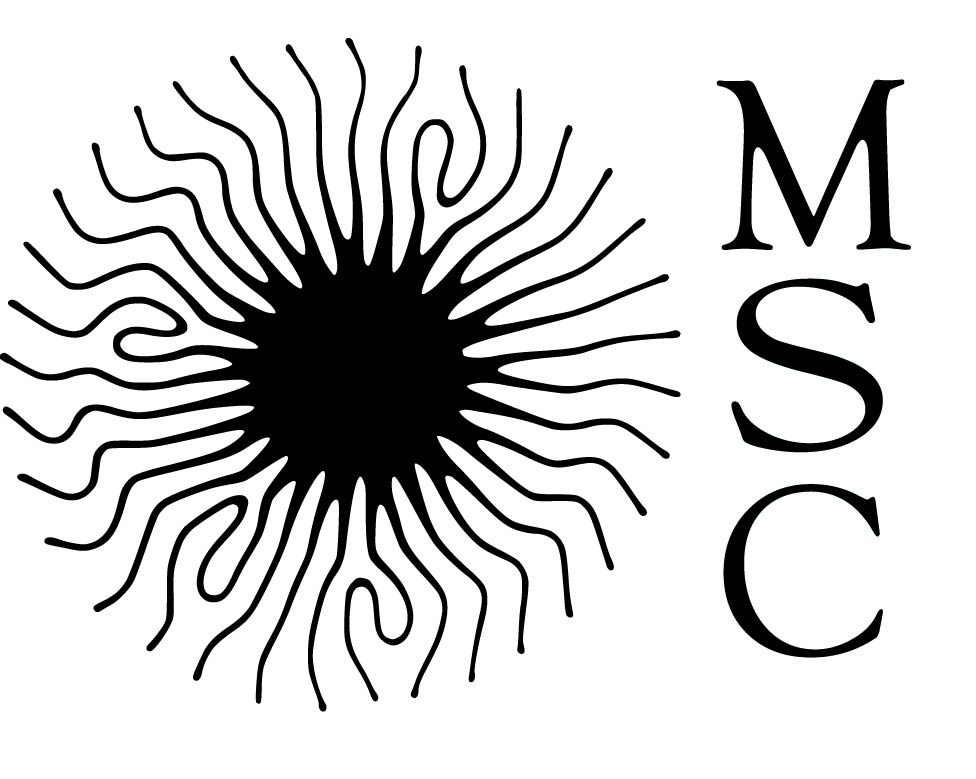Granular systems, Erosion, Morphogenesis and Environment, Biohydrodynamics.
DSHE
This area focuses on the phenomena of self-organization and shape emergence in different physical systems, either discretely (granular particles, micro-swimmers) or continuously (the evolution of a solid interface through erosion).
Granular media in weightlessness
The aim of the Space Grains project is to study the behavior of granular media in the absence of gravity, for dilute to dense regimes. To this end, a European ESA Vip-Gran instrument has been developed for studies carried out in parabolic flights aboard the Airbus Zero-G (see scientific results), then within the International Space Station (ISS). Experiments focus on density fluctuations of a set of grains subjected to vibration, convection, segregation, as well as blocking, rheology and acoustic wave propagation phenomena in granular materials. The instrument is fully automated, with interchangeable cells depending on the scientific objective being studied. In mid-2025, it will be integrated into the European Columbus module of the ISS for a minimum of 5 years of activity, including 5 missions to lower or raise cells from the ISS.
Participant :
Eric Falcon

Legend: Transition from a “gaseous” regime (left) to a cluster regime (right) of grains (diameter 1 mm), subjected to lateral vibrations in parabolic flights, as the number of grains increases.
Self-organization of particles in the presence of remote interaction
The organization of matter generally results from two competing mechanisms: thermal agitation and long-distance interactions between the molecules and atoms of which the medium is composed. Much of condensed matter physics studies the resulting microscopic structure to deduce thermodynamic and mechanical properties. We have proposed an analog macroscopic experiment that reproduces this competition on a macroscopic scale. We use a device to study the dynamics and structure of granular particles in the presence of mechanical agitation, magnetic dipolar interactions and confinement in a thin film. At low interaction and agitation, granular gas-like phases are obtained, while at higher interaction crystal-like or disordered solid-like frozen phases appear. We have shown that in vibrated granular gases, velocity fluctuations organize themselves collectively like the propagation of mechanical waves, constituting a macroscopic analogue of condensed matter phonons.
Participants :
Michael Berhanu, Eric Falcon
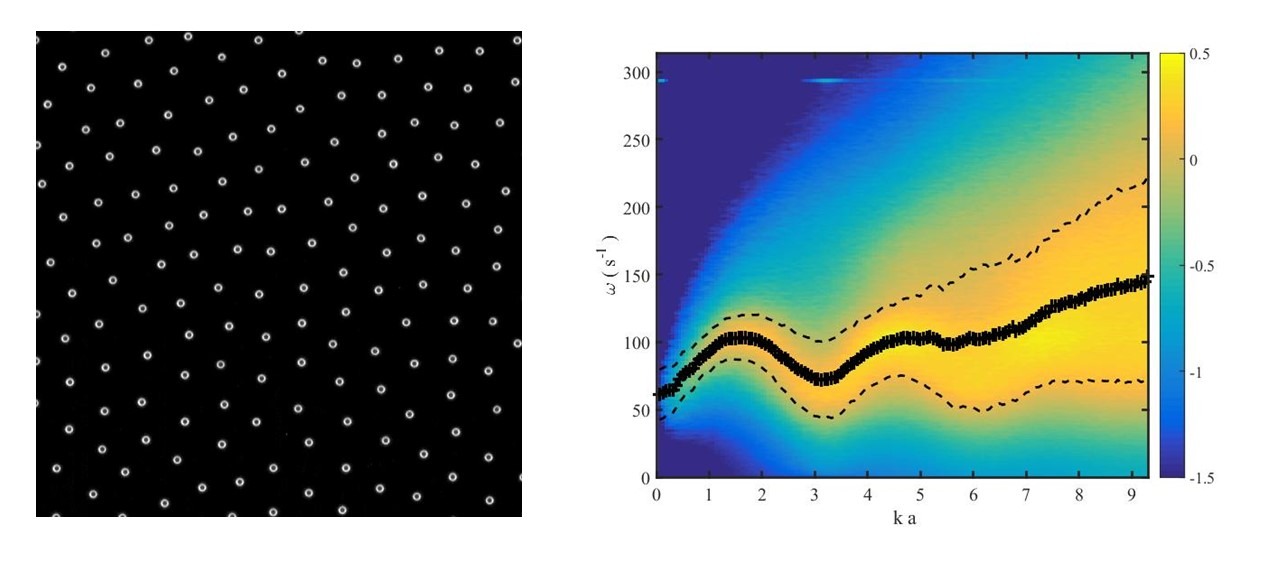
Caption : Left, top view of mechanically agitated balls (diameter 1 mm) in dipolar magnetic interaction. The balls vibrate around their equilibrium position. Right: space-time spectrum of longitudinal velocity fluctuations. The spectrum maxima experimentally define the dispersion relationship of longitudinal waves.
Shape and flow, natural patterns and dynamics of dissolution erosion
Chemical erosion through the dissolution of minerals by water flow is an important mechanism for rock alteration. If they are sufficiently soluble, such as salt, gypsum and limestone, dissolution can lead to the formation of cave networks or carve out surface plateaus exhibiting characteristic shapes. Using model experiments and numerical simulations, we show that hydrodynamic solute transport explains the shapes and determines the dynamics of erosion. This flow may be dissolution-induced, generating density stratification at the surface of the dissolving solid, or it may be imposed. In this case, topography, flow and dissolution are coupled, giving rise to patterns. We have shown, for example, on rapidly dissolving materials, that a runoff flow on a sloping substrate spontaneously gives rise to grooves running in the direction of the slope and increasing in width over time. These experiments reproduce the grooves observed on limestone plateaus formed by the action of rain over periods of several centuries.
Participants :
Michael Berhanu, Sylvain Courrech du Pont
Thesis of Martin Chaigne
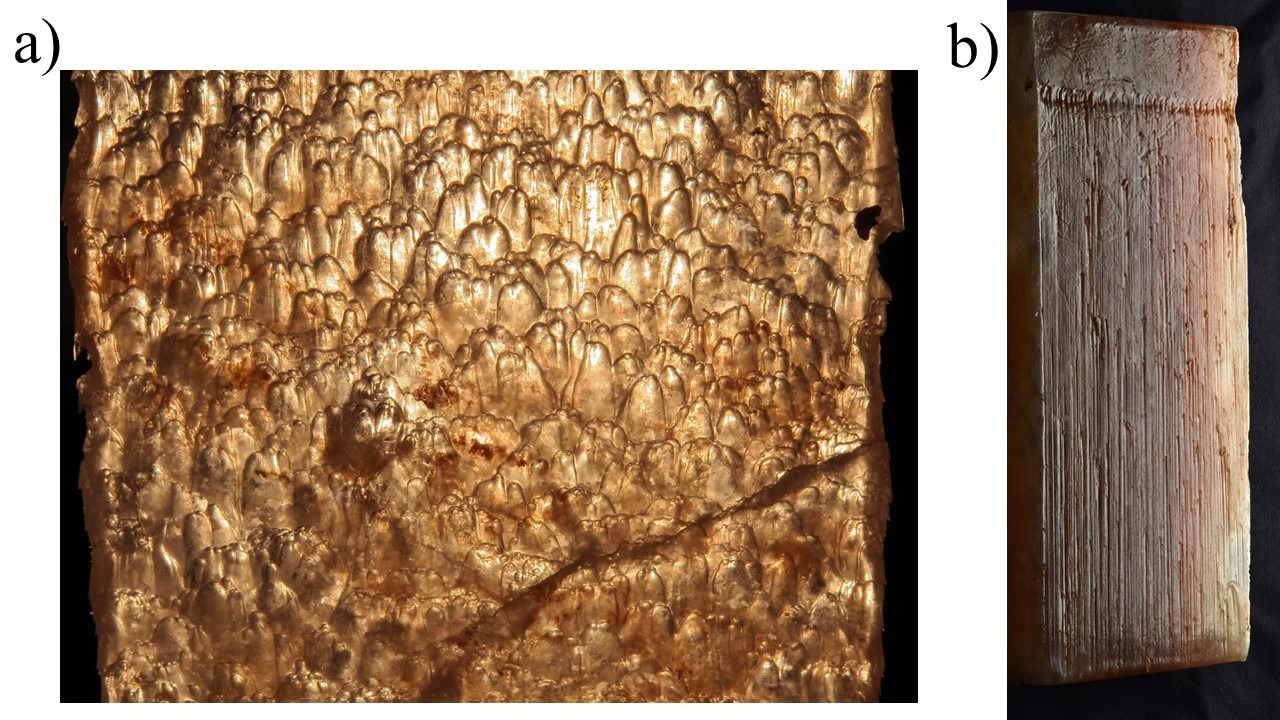
Legend: a) Dissolution patterns on the underside of a salt block suspended in a bath at rest. The block is tilted. The top of the block is at the top of the image (Cohen et al. PRF 2020). b) Dissolution patterns obtained by running water over a salt block (20 x 10 cm), tilted by 36° after one minute at a flow rate of 0.79 L/min (Guerin et al. PRL 2020). The flow was from top to bottom.
Gel of porous and granular solids: from laboratory to permafrost
Permafrost covers one-fifth of the planet’s land surface. It consists of a first layer a few meters below the surface, known as the active layer, which freezes in winter and thaws in summer, situated above a thicker layer of soil that is constantly below the freezing point. The presence and displacement of a solidification front in a soil can cause underground water flows and structural changes, leading to the emergence of surprising shapes on the surface, some examples of which are illustrated in the figure below. With global warming and melting permafrost, this type of event is likely to become increasingly frequent, altering landscapes and their ecosystems and infrastructures.
All these behaviors are still poorly understood. Indeed, the associated physical mechanisms are still unclear, and we lack consistent predictive models for heat transport, phase change dynamics and induced groundwater flows in these complex media. We are therefore seeking to gain a better understanding of solidification in porous media and the flows generated. To this end, we propose to carry out an experimental study of freezing dynamics in two model porous media soaked in water: a granular medium and a hollow solid matrix.
Participants:
Axel Huerre, Ambre Bouillant (MSC DOMM)

Caption: Left: Aerial image of the Pergelisol. Right: Freezing diagram of a bead assembly.

Legend: an ice front advances through a wet grain pile (100 um radius), leaving behind zones of emptiness (vertical black lines) after displacing the grains..
The birth of the dunes
When the wind blows over a sand surface, dunes form as grains are transported. Dunes are ubiquitous in sand deserts, and laboratory experiments (aquatic dunes) show that an initially flat sand bed is transformed into propagating dunes when sheared by a flow. The sand bed destabilizes with a well-defined initial wavelength. These observations indicate that dunes are the manifestation of supercritical, convective instability. What’s more, no dunes shorter than 6 – 10 m are found on earth. This threshold for instability to develop means that it has never been possible to observe the birth of wind dunes, as the sizes involved are inaccessible to laboratory wind tunnels.
We circumvented this problem by launching a large-scale project in 2013 in the Tengger desert in northern China: an in situ “laboratory” experiment on a landscape scale. In this location subject to a bi-directional wind regime, we flattened and instrumented two desert plots measuring 110 x 70 m and 90 x 90 m to track and measure dune birth with two different boundary conditions for almost four years. The first plot was left loose and erodible. The second plot was stabilized with gravel and isolated from external flows by rice straw traps. Two piles of sand (source) were deposited and regularly fed. It was then possible to jointly monitor, in the same environment, the growth of digitation dunes (on the stabilized plot) and of dune instability (on the loose plot) and to calculate dispersion relationships (instability growth rate). This project is the fruit of an international Franco-Chinese collaboration.
Participant :
Sylvain Courrech du Pont


Caption: A. Photograph of incipient dunes. B. Dispersion relationship from in situ experiment (growth rate vs. wavenumber).
Morphogenesis of reticulated networks (or not)
We have studied the morphogenesis of looped networks, observed in many fields (cracking, river deltas, leaf veins, vessels in animals, city streets). A first question concerns the morphogenesis of these different networks: what are the mechanisms at work to form
to form the reconnections that create the loops and enable us to reproduce the details of the networks we’ve observed. But in the end, in all these examples, we also observe a transition between a tree-like mode of growth, and a mode that ultimately forms loops (including for cracks or city streets). This makes the problem much more general. In particular, it seems that in the course of evolution there is always a transition between a tree-like mode of growth, which evolves into a looping mode. While this clearly shows the advantages of looped networks over tree networks, it also shows that in all these examples there are possible mechanisms which, under specific conditions, enable the transition from one mode to the other.
Participants :
Stéphane Douady, Annemiek Cornelissen (MSC, Morphodyn)
Thesis of Sélène Jeammet and Camille Le Scao.
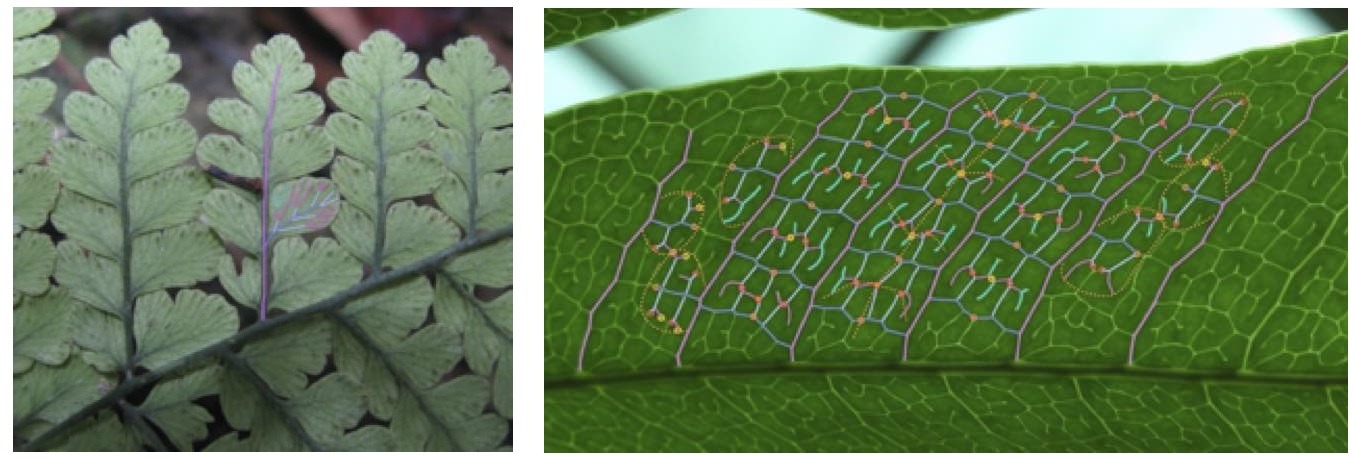 Caption: Two examples of ferns, one tree-shaped, the other reticulated, but with the same basic structure (tree with 4 bifurcations).
Caption: Two examples of ferns, one tree-shaped, the other reticulated, but with the same basic structure (tree with 4 bifurcations).
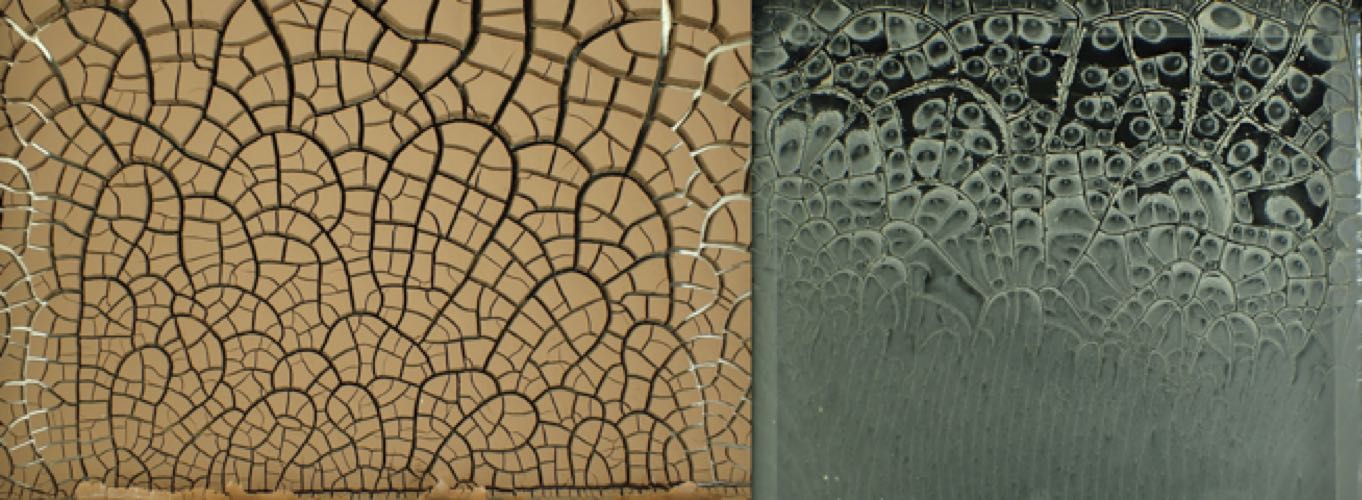
Caption: Cracks obtained by drying a solid layer.
Collective behavior of photosynthetic microorganisms
This research topic is organized into two projects. On the one hand, we are studying bioconvection in suspensions of motile (Chlamydomonas) and phototactic microalgae, forced by inhomogeneous lighting. We have demonstrated complex regimes by changing the shape of the light beam and measured the phototactic response of the microalgae as a function of light intensity, thanks to a collective response to this inhomogeneous light forcing.
On the other hand, we are studying the growth of cyanobacteria cultures (influence of pH, temperature gradient, …) and the consequence on mucilage formation by salt stress (observed in the environment during seasonal “blooms”), blooms observed for the first time in the laboratory in small volumes (~ 5 mL) in 2015 at the MSC laboratory.
Participants : Julien Dervaux, Philippe Brunet
Thesis of Aina Ramamonjy

Legend: Phase diagram of different bioconvection instabilities as a function of the Rayleigh number Ra and the ratio w/H between light beam width and suspension height. Concentration patterns (high concentrations in red and low concentrations in blue). (d) Kymograph (in azimuthal angular coordinate and with time) of normalized algae concentration, 5 mm from beam center, showing dendritic structures with constant appearance and disappearance of bioconvection cells. (e) Lin-log plot of normalized wavelength λ/H with Ra for different w.
